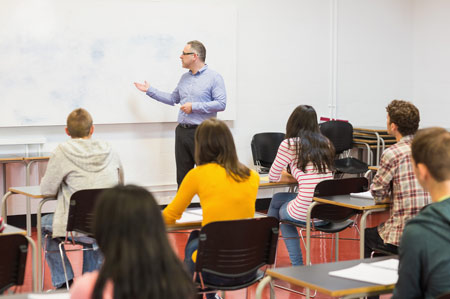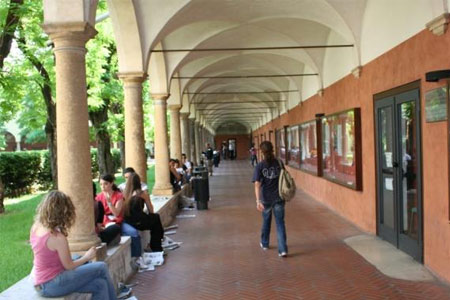- Didattica

Semestre filtro
Corsi di laurea
Corsi di laurea magistrale
POST LAUREA
- Facoltà
- Segreterie e sedi

Segreterie
Strutture
- Persone
- MY UNIVR
-
The aim of these lessons/seminars is to illustrate in detail the quantitative aspects of hemodynamics and the intrinsic and extrinsic factors that regulate vasomotor tone with elements of smooth muscle physiology.
Hemodynamics
1.0 Premises
2.0 Pressure or Energy per unit of V
2.1 Forces applied to the cardiovascular system
2.2 Energy in a static or moving fluid (dynamic conditions)
2.3 Energetics of circulation
2.4 Pressure and kinetic factor
2.5 Energy transformations in an ideal moving fluid
2.6 Bernoulli's theorem
2.7 AST and velocity - – Continuity equation
2.8 Bernoulli – ET variations in an ideal fluid in motion
2.9 Real fluid in motion
2.10 The action of the heart pump
3.0 Laminar flow
3.1 Laminar flow and viscosity
3.2 Viscosity - properties
3.3 Fluids Newtonians and blood
3.4 Viscosity of blood and hematrocrit
3.5 Viscosity and diameter of vessels
3.6 Fåhraeus – Lindquist effect
3.7 Fåhraeus – Lindquist effect and oxygen delivery
4.0 Inertial effects and turbulent flow
4.1 Reynolds number, Vc and flow meters
4.2 Turbulent flow and velocity profile
4.3 Stenosis
5.0 Hagen-Poiseuille – Losses due to viscosity
5.1 Hagen-Poiseuille – Vascular radius
5.2 ET variations in a real moving fluid
5.3 ET and Ek variations in a real fluid
5.4 Ek variations and pressure measurement
6.0 Hydraulic resistances: in series and in parallel
6.1 In parallel and in series: not everything is obvious...
6.2 The total peripheral resistance (RPT) of the vascular bed
6.3 The vascular resistance
6.4 The vascular resistance and AV shunt
7.0 Variations in potential and static energy
7.1 Variations in potential energy and hemodynamics
7.2 Variations in potential energy and orthostatic intolerance
Smooth muscle
1.0 Muscular arteries
2.0 Arterioles 3.0 Smooth muscle
3.1 Structure of smooth muscle
3.2 Control of contraction
3.3 Contraction and Ca++
3.4 Sources of cytosolic Ca++
3.5 Activation of the cell membrane
3.6 Spontaneous electrical activity
3.7 Types of smooth muscle
3.8 Innervation and neurotransmitters
3.9 Innervation of single unit muscles
3.10 Nerves and hormones
3.11 Local factors
4.0 Local distribution of blood flow
Regulation of vasomotor tone
1.0 Intrinsic and local factors of control of smooth muscle tone in arterioles
1.1 Control of muscle tone smooth muscle in the arterioles: intrinsic local and factors
1.2 Hyperemia
1.3 Autoregulation
1.4 Flow-dependent dilation
1.5 Reactive and flow-dependent vasodilation
1.6 Local factors-Summary
1.7 Extrinsic factors of tone control
1.8 Adrenergic receptors (some more details...)
1.9 Extrinsic factors : cholinergic neurons, noncholinergic, non-adrenergic neurons, hormones
1.10 Extrinsic controls - Summary
1.11 Factors that control the radius of arterioles - summary
2.0 Control of arterioles in specific organs
3.0 ANS and cardiovascular system - Synopsis
Self - evaluation test with Kahoot
© 2002 - 2025
Verona University
Via dell'Artigliere 8, 37129 Verona |
P. I.V.A. 01541040232 |
C. FISCALE 93009870234